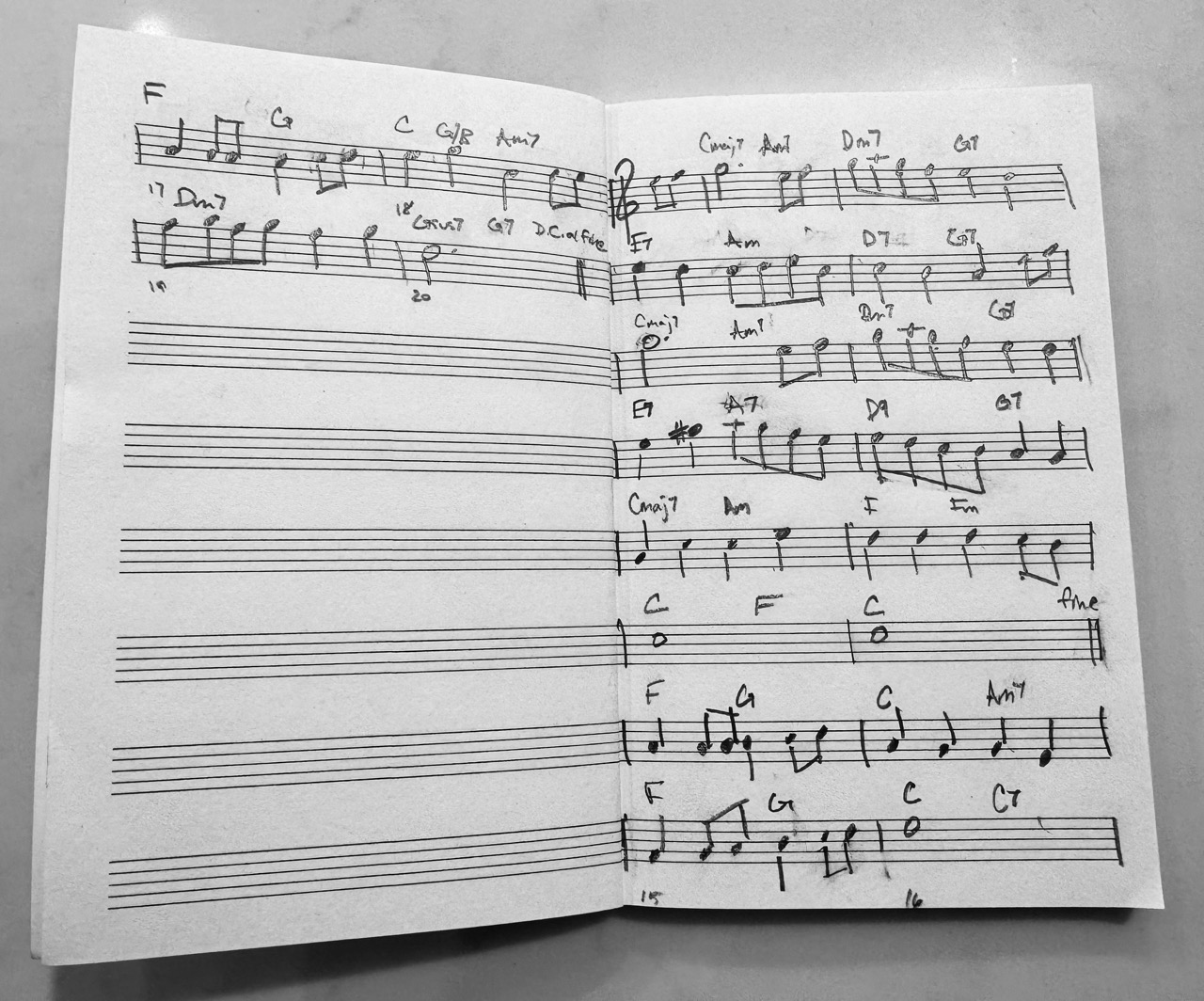I’ve written quite a few songs and pieces of music in my 5+ decades on this planet. But I have many, many more small fragments, pieces of manuscript, voice memos, and song ideas that remain in a nascent, partially-formed state. This seems to be a common state of affairs. While I occasionally sort through the backlog of material and continue working on ideas, the odds are against most of them ever being completed.
I learned from Sarah Lewis’s great book The Rise: Creativity, the Gift of Failure, and the Search for Mastery that painter Paul Cézanne considered something like 90% of his paintings to be unfinished and only gave the endorsement of his signature to a small set. Lewis provides both heartbreaking and uplifting examples of the interplay between the more private creative impulse and the difficult importance of sharing a work with others.
This struggle to shephard an artistic idea into the larger world can end up being the subject of the art itself. I happen to be a sucker for self-referential art and creations that deal with the creative process. I have a particular love of songs about songs and song writing. One of my favorites is Ron Sexsmith’s This Song which speaks from the point of view of the songwriter:
I brought a song into this world
Just a melody with words
It trembles here before my eyes
How can this song survive?
and
Oh now, I see the game I’m up against
No wonder I feel so afraid
For every song you ever heard
How many more have died at birth?
Oh how, how can this song survive?
Some creative ideas are more compelling than others, but all compositions are vulnerable to the lack of attention and stewardship needed to carry them to the point where they can stand alone as a completed work. Artists must also develop and nurture the courage needed to reveal themselves and their work’s imperfections for public criticism or, even worse, private judgement.
This is the story of a song that was able to beat the odds and survive. The favorable conditions were an afternoon with enough time to develop a musical idea into mostly-complete song. The song has continued to evolve over the last several months and I now see it as a fully-formed piece with the ability to survive, if not thrive.
I wrote the melody and chords sitting on the couch with my trusty Sigma classical guitar which my father and I bought for $25 at the Martin Guitar factory in Nazareth Pennsylvania in the early 1980s. The guitar had an inner brace that needed to be re-glued, but ever since the repair I have played the guitar more than any other instrument—hundreds and hundreds of hours. One of the keys to my creative process is unencumbered play with an instrument and the sharing between the the fingers, the instrument, the vibrations, the brain, and whatever else is in there waiting to come out.
As I sat on the couch developing the idea I got the feeling that I should write it down. This is a welcome, although sometimes ignored impulse. The transcription process from what I’ve worked out on the instrument and in my brain into notes on the page saves the idea in a durable form and usually helps me with the process of iteration and refinement. Some musical figures and styles are best captured by a quick recording, but this particular song idea had the kind of old fashioned american songbook kind of structure that is readily captured as a melody and a set chord symbol indicating the harmony—what we often call a lead sheet.
Once I am semi-satisfied with what is down on paper, I find it useful to give the idea some space and come back to it with fresh look. I also have to push myself a bit to stick with the idea at the beginning of the process, so a break can be a useful carrot to bring things to a comfortable stopping place without too many loose ends.
I continued to play and refine smaller aspects of the song and a couple of days later I entered it into the MuseScore music notation program with the placeholder title of Song Four.
I was a bit embarassed by the simplicity and old-fashioned show tune style of the song. Thankfully I played it for my musician son who happened to be visiting. They pointed out some of the interesting harmonic elements and tensions between the melody and chords, reassuring me that there was something interesting in the song. I really appreciate their encouragement on any of my endeavors and in this case there is no doubt it prolonged the life of this song.
I’ve fooled around with several ways of arranging the song, including a not-yet-fully-baked string trio arrangement. I will probably set the string arrangement aside, as I am preferring simpler guitar and piano version.
I’ve also spent some time working on lyrics, but I’m not ready to share anything but the Next Winter Song title at this point. There are things so revealing about poetry and lyrics that make it harder for me to cross the sharing line.
As you might guess from the title, the song is already somewhat self-referential. While there is always some level of cleverness involved with producing art about art I am trying to not let that get in the way of truth and connection. More to come.
Here is a simple playing of the song on the piano:


